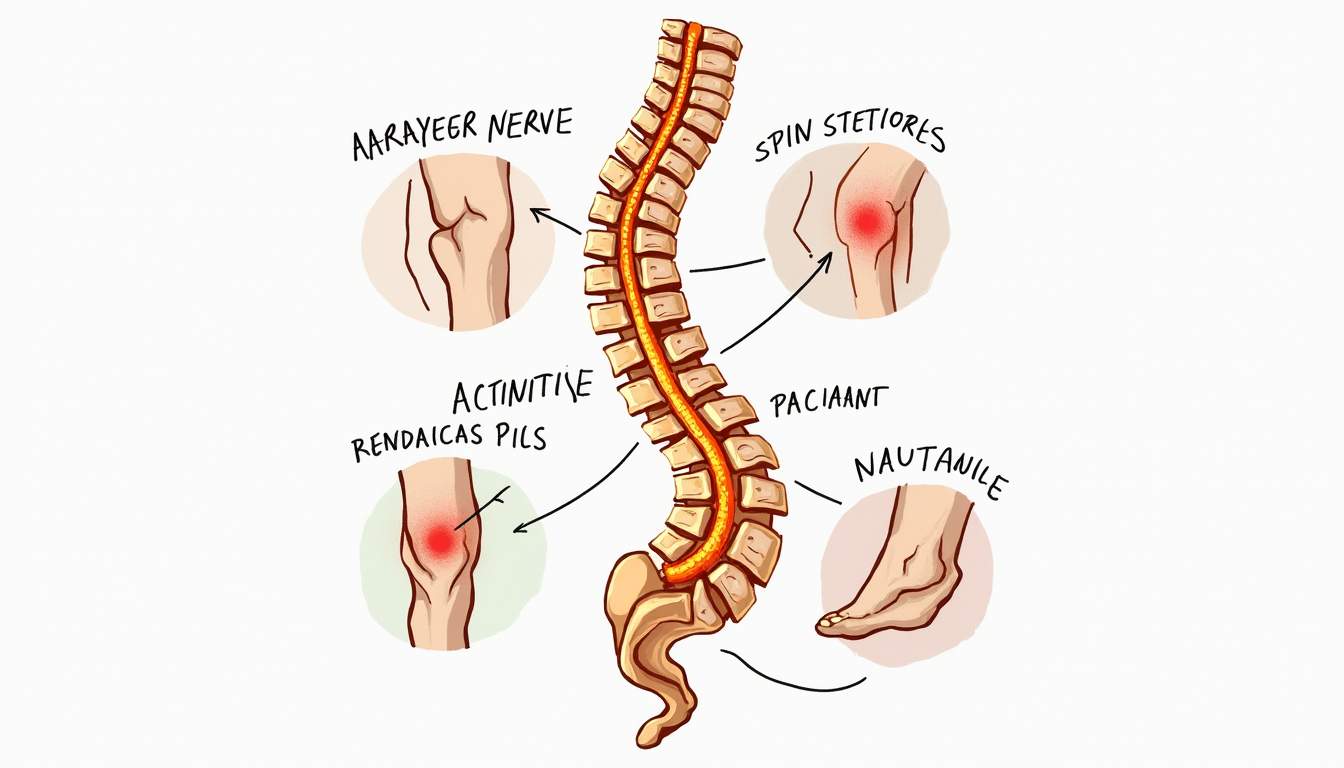Who Treats Sciatica: Finding the Right Specialist for Relief
- Published on
- Kurt Johnson
Trustindex verifies that the original source of the review is Google. came here for two injuries (first time through BUPA), second time I paid myself to get a quick diagnose and rehab exercises of knee injury after London triathlon middle distance. Six weeks later I did IM70.3 Belgium pain free and smashed it. Update: I keep coming back if and when a niggle occurs. I feel that if you do this early enough you prevent a full-blown injury with big setback.Trustindex verifies that the original source of the review is Google. Update (2024) - stopped going to One Body after a ridiculous amount of admin problems. Hope they have sorted themselves out. Not a reflection on Bethany. I had lingering issues with a frozen shoulder. Saw Bethany and she was absolutely brilliant. Sussed the problem quickly, communicated clearly about the course of action she'd recommend, pinpointed the problem area during our session and also gave me exercises to do at home. Currently mid treatment and confident I'm on the road to recovery. More range of movement restored after one session with her than 3 sessions with my last physio. Glad I made the change.Trustindex verifies that the original source of the review is Google. Miss Wrobel has been very attentive in my rehab and provide great treatment plan for my recovery.Trustindex verifies that the original source of the review is Google. I had an initial taster that work paid for with Gabriel at Farringdon one body ldn. It was one of the best experiences with a physio I’ve ever had (I’ve been to many). I then went on to book multiple sessions with him for a shoulder injury and I must say his massage work coupled with his knowledge of exercises and anatomy makes him the BEST physio I have ever worked with. He was worth every penny and I’d recommend him to anyone. Gabriel at one body ldn is a top top physio and they are lucky to have him!Trustindex verifies that the original source of the review is Google. Eli has provided a knowledgeable, professional and expert physiotherapy and sports massage service for my back pain within a clean and welcoming environment. I am always seen on time and initially had a thorough history taken before treatment started. I cannot recommend Eli highly enough.Trustindex verifies that the original source of the review is Google. I have been going to One Body London Bridge now for a few months and very impressed by the service. Physiotherapy treatment is fantastic with immediate pain relief and a well thought out program to help keep the pain away. The space is clean, modern and well equipped. I also have loved the flexibility to book in at other locations as well, their Farringdon location is also fantastic. The team is extremely professional and their booking system is very easy to use which is very convenient. Highly recommend One Body.Trustindex verifies that the original source of the review is Google. Incredibly impressed by Rebecca. Great bedside manner, great knowledge, and a more holistic view than I've experienced from physics. Highly recommend!Trustindex verifies that the original source of the review is Google. Load more
Award-Winning Sciatica Physiotherapy Near You
Sciatica is a condition that can cause significant discomfort and pain, often leading individuals to seek the help of various healthcare professionals. Understanding the nature of sciatica, including its symptoms and the types of specialists available, is essential for effective sciatica treatment. In this article, we will explore the different types of specialists that can help alleviate sciatica, ensuring you can find the right support for your needs.
Understanding Sciatica: Causes and Symptoms
Sciatica refers to pain that follows the path of the sciatic nerve, which runs from the lower back through the hips and buttocks and down each leg. The condition is commonly caused by a herniated disc, spinal stenosis, or other types of back injury that compress the nerve. Additionally, other factors such as diabetes and age-related changes in the spine can contribute to the onset of sciatica. Lifestyle choices, including prolonged sitting, lack of exercise, and poor posture, can exacerbate the condition, making it crucial for individuals to maintain a healthy lifestyle to mitigate risks.

The Science Behind Sciatica
The sciatic nerve is the largest nerve in the body, and when it is compressed or irritated, it can cause a variety of painful symptoms. The physiological basis of sciatica involves inflammation, nerve compression, and sometimes damage to the nerve, leading to disrupted signaling between the brain and the lower limbs. Understanding this mechanism is vital for both patients and healthcare providers when determining appropriate treatment options. Moreover, the interplay between the nervous system and the musculoskeletal system is complex; when one is affected, it can lead to a cascade of issues that further complicate recovery. This highlights the importance of a comprehensive approach to treatment, which may include physical therapy, medication, and lifestyle modifications.
Common Symptoms of Sciatica
Individuals suffering from sciatica often experience symptoms that can vary widely. Commonly reported symptoms include:
- Sharp pain that radiates from the lower back to the leg
- Numbness or tingling in the leg or foot
- Weakness in the affected leg
- Pain that worsens with prolonged sitting or standing
- Difficulty moving the leg or foot
These symptoms can significantly impact daily life, prompting individuals to seek medical assistance for relief. In addition to physical discomfort, sciatica can also lead to emotional distress, as chronic pain often contributes to anxiety and depression. Many individuals find themselves altering their daily routines, avoiding activities they once enjoyed, or even struggling with work-related tasks. This multifaceted impact underscores the importance of addressing not only the physical symptoms of sciatica but also the psychological effects that may arise from living with chronic pain. Support groups and counseling can be beneficial for those navigating the emotional challenges associated with sciatica, providing a sense of community and understanding.
The Role of Primary Care Physicians in Treating Sciatica
Primary care physicians often serve as the first point of contact for individuals experiencing sciatic pain. They play a crucial role in the initial assessment and management of the condition, ensuring patients receive the appropriate referrals to specialists when necessary. This early intervention is vital, as timely treatment can significantly improve a patient’s quality of life and prevent the condition from worsening.

Initial Diagnosis and Referrals
During the initial consultation, a primary care physician will typically conduct a thorough evaluation that includes a physical examination and a review of medical history. They may order imaging tests, such as X-rays or MRIs, to identify underlying issues. If sciatica is confirmed, the physician may refer the patient to a specialist such as a chiropractor, physiotherapist, or pain management expert for targeted treatment. This collaborative approach ensures that patients receive a comprehensive care plan tailored to their specific needs, which can include a combination of therapies aimed at alleviating pain and restoring function.
Non-Specialist Treatment Options
Aside from referrals, primary care physicians can offer several non-specialist treatment options for sciatica. These may include:
- Non-steroidal anti-inflammatory medications
- Physical therapy exercises and stretches
- Heat and ice therapy
- Advice on posture and ergonomics
These treatments may provide initial relief and help manage symptoms before seeing more specialized care. In addition to these options, primary care physicians often emphasize the importance of lifestyle modifications, such as maintaining a healthy weight and engaging in regular physical activity. These changes can not only alleviate current symptoms but also play a preventative role in reducing the risk of future episodes of sciatica. Furthermore, educating patients about the nature of their condition can empower them to take an active role in their recovery, fostering a sense of control and promoting adherence to prescribed treatment plans.
Chiropractors and Sciatica Relief
Chiropractors specialize in diagnosing and treating musculoskeletal disorders. Their approach to treating sciatica focuses on spinal manipulation and alignment, which can relieve pressure on the sciatic nerve. By addressing the underlying causes of sciatica, chiropractors aim to not only alleviate pain but also enhance overall mobility and quality of life for their patients.

Chiropractic Techniques for Sciatica
Chiropractors utilize various techniques to alleviate sciatica pain, including:
- Spinal adjustments to correct misalignments
- Massage therapy to reduce muscle tension
- Stretching exercises to improve flexibility
- Postural training to prevent future issues
These techniques aim to restore proper function and relieve nerve compression, which may lead to significant improvements in pain levels. Additionally, chiropractors may incorporate modalities such as electrical stimulation or ultrasound therapy to further enhance pain relief and promote healing. These adjunctive therapies can help to reduce inflammation and improve circulation in the affected areas, supporting the overall treatment plan.
When to Consider Chiropractic Care
Chiropractic care may be a suitable option for individuals who prefer non-surgical treatments or have not found relief from conventional medical treatments. Individuals experiencing acute or chronic sciatica pain that interferes with their daily activities should consider consulting a chiropractor for a comprehensive evaluation. Moreover, those who wish to take a proactive approach to their health and prevent future episodes of sciatica may find chiropractic care beneficial. Regular chiropractic visits can help maintain spinal health, improve posture, and educate patients on ergonomic practices that reduce strain on the back and legs.
Voted by 1000's as the best sciatica treatment in London
From fixing your sciatic neuropathy to piriformis syndrome rehabilitation; we’ve got you covered.
Get a precise diagnosis, treatment plan, and expert sessions for instant pain relief.
Physiotherapy for Sciatica Management
Physiotherapy plays a critical role in the long-term management of sciatica. Physical therapists focus on rehabilitation and strengthening exercises to support recovery and prevent recurrence of symptoms. By addressing the underlying causes of sciatica, such as herniated discs or spinal stenosis, physiotherapy can significantly improve a patient’s quality of life. Furthermore, the therapeutic relationship established between the therapist and patient fosters a supportive environment that encourages active participation in the healing process.
The Role of Physical Therapy in Sciatica Treatment
A physical therapist will create a customized treatment plan that may include:
- Specific exercises to strengthen core muscles and improve posture
- Manual therapy techniques to enhance flexibility
- Education on body mechanics to prevent aggravation of symptoms
- Stretches to alleviate tightness around the sciatic nerve
This approach not only aids in recovery but also empowers patients to manage their condition proactively. The therapist may also incorporate modalities such as heat or cold therapy, electrical stimulation, or ultrasound to further alleviate pain and promote healing. Additionally, incorporating lifestyle modifications, such as ergonomic adjustments at work or advice on proper lifting techniques, can play a significant role in preventing future episodes of sciatica.
Benefits of Physiotherapy for Sciatica
The benefits of physiotherapy are extensive. Patients often experience:
- Reduced pain and inflammation
- Improved mobility and function
- Increased strength in supporting muscles
- Enhanced understanding of posture and body mechanics
These benefits combine to provide a holistic approach to sciatica relief. Moreover, the educational component of physiotherapy helps patients develop a deeper awareness of their bodies, which can lead to better self-management strategies. Many individuals report not only a decrease in pain but also an increase in confidence as they learn to navigate daily activities without fear of exacerbating their condition. This newfound empowerment can be transformative, allowing individuals to return to hobbies and activities they once enjoyed but had to abandon due to their symptoms.
Pain Management Specialists and Sciatica
For those with persistent pain that does not respond to conventional treatments, consulting a pain management specialist may be necessary. These specialists are equipped to provide advanced techniques and interventions.
Interventional Treatments for Sciatica
Pain management specialists may offer several interventional treatments, such as:
- Injectable corticosteroids to reduce inflammation
- Nerve blocks to alleviate pain
- Radiofrequency ablation to disrupt pain signals
These treatments can provide significant relief for those suffering from severe sciatic pain, allowing them to return to daily activities.
The Role of Medication in Sciatica Relief
Alongside interventional treatments, pain management specialists often prescribe medications to help control symptoms. These may include:
- Nonsteroidal anti-inflammatory drugs (NSAIDs)
- Muscle relaxants for spasms
- Antidepressants or anticonvulsants for nerve pain
The aim of medication is not only to relieve pain but also to enable patients to engage in physical therapy and rehabilitation activities effectively.
In conclusion, sciatica can significantly affect one’s quality of life, but by understanding the roles of different healthcare providers—from primary care physicians to specialists—you can find the right path to relief. Seeking the appropriate treatment tailored to your specific situation is crucial for effective management and recovery.
Experience Personalized Sciatica Relief at One Body LDN
If you’re struggling with sciatica and looking for a treatment plan that’s as unique as you are, One Body LDN is here to help. Our award-winning team of physio experts specializes in combining exercise rehabilitation with deep tissue massage to tackle your sciatica pain head-on. We understand that each individual’s journey to recovery is different, which is why we provide personalized care that aligns with your specific needs. Don’t let sciatica hold you back any longer. Fix your sciatica today. Book an appointment with us and take the first step towards feeling your best.

(Disclaimer: The information in this post is for educational purposes only and does not replace personalised medical advice. Always consult a qualified professional for specific guidance on diagnosis and treatment.)





